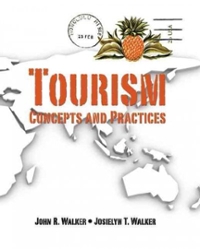Question
Question 10.1 Leonard Manufacturing is a manufacturer of a special bearings. Leonard can sell 10,000 units of his bearings annually. Production averages 80 units per
Question 10.1
Leonard Manufacturing is a manufacturer of a special bearings. Leonard can sell 10,000 units of his bearings annually. Production averages 80 units per day, while demand is 60 units per day. Holding costs are $5.00 per unit per year, and setup cost is $200.00.
(a) If the firm wishes to produce this product in economic batches, what size batch should be used?
(b) What is the maximum inventory level?
(c) How many order cycles are there per year?
(d) What are the total annual setup and holding costs?
Question 10.2
Good Kitchen sells a popular blender with the demand of 175/month. Good Kitchen purchase the blenders from its supplier at the unit cost of $2.50 and the cost of placing an order has been estimated to be $12.00. Good Kitchen uses an inventory carrying charge of I = 27% per year.
Determine (a) the optimal order quantity, (b) the order frequency, and (c) the annual holding and setup cost. If, through automation of the purchasing process, the ordering cost can be cut to $4.00, what will be (d) the new economic order quantity, (e) the order frequency, and (f) annual holding and setup costs? Explain these results.
Question 10.3
A standing desk consists of a desk top, four legs, and two adjustment motors. Each leg fastens to the desk top with one fastener set. Each adjustment motor requires two fastener sets for attachment to the legs. Currently there is one order outstanding, to make 180 standing desks. There are 500 legs and 20 desk tops in inventory. There are no other large items in inventory, and no scheduled receipts.
(a) Draw the product structure tree.
(b) Calculate the net requirements to fulfill the outstanding order.
Question 10.4
The following table shows the bill of material for Product A. The gross requirements for A are 200 units in week 6 and 250 units in week 8. Develop the MRP tables for each item for an 8-week planning period. Use the lot-for-lot lot-sizing rule.

Step by Step Solution
There are 3 Steps involved in it
Step: 1

Get Instant Access to Expert-Tailored Solutions
See step-by-step solutions with expert insights and AI powered tools for academic success
Step: 2

Step: 3

Ace Your Homework with AI
Get the answers you need in no time with our AI-driven, step-by-step assistance
Get Started


